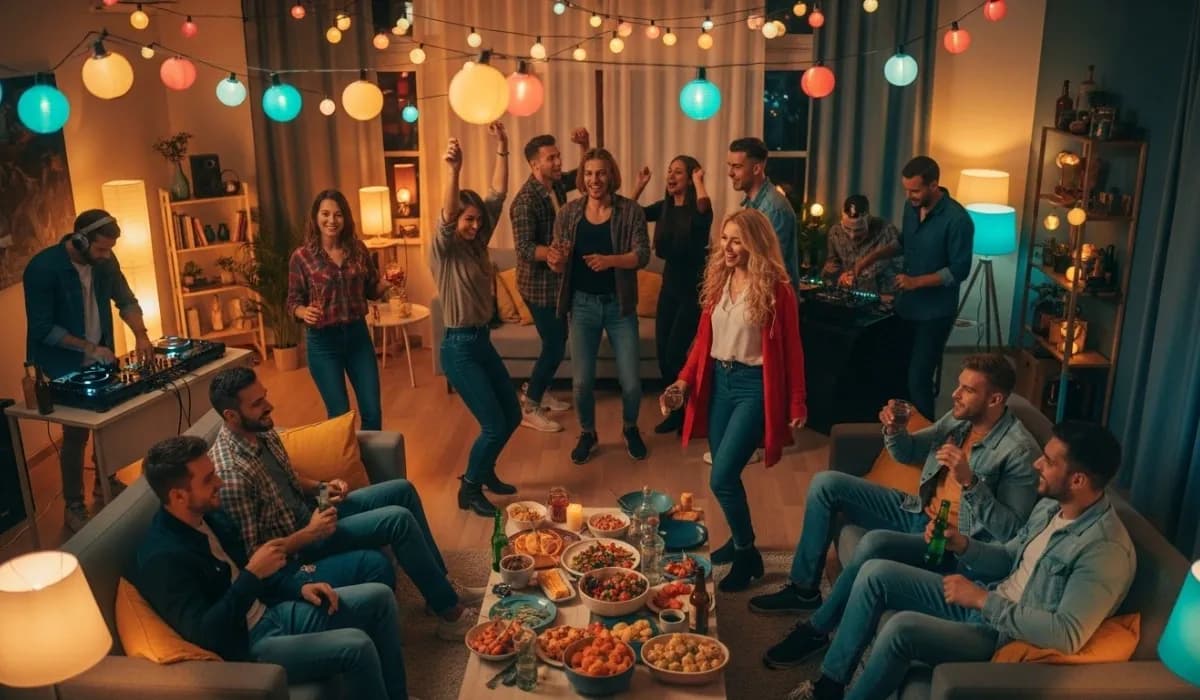
There’s a new nightlife script being written and it often takes place in someone’s living room. Over the last few years, especially since the pandemic, house parties have stopped being just nostalgic throwbacks and have evolved into a cultural alternative to traditional clubs: intimate, affordable, highly shareable, and tailor-made for younger crowds who want control over the vibe. Below, we’ll unpack why house parties are booming, what’s changing about nightlife, how tech and economics are fueling the shift, and what it means for culture and safety.
Traditional clubs sell a formula: DJs + dancefloor + bar + security. House parties sell a feeling – connection, exclusivity, creative freedom. Younger audiences (especially Gen Z) increasingly prefer experiences that feel intentional and shareable: themed nights, queer-safe spaces, K-pop sing-alongs, DIY art parties, or “quiet raves” with headphones. These formats let hosts curate playlists, create bespoke atmospheres, and encourage real conversation – things many feel clubs have grown stale on. Reporting on youth nightlife highlights this appetite for intimacy and unique, micro-experiences.
Cost matters. Cover charges, high drink prices, transport, and dressing up all add up. House parties can be cheaper (or free), and they sidestep city and licensing overheads. For promoters and emerging DJs, private and pop-up shows reduce booking costs and allow for experimental formats. Post-pandemic rising costs (energy, rents, staffing) hit clubs hard — contributing to closures or scaled-back operations—while the house-party model is low-overhead by comparison. The Guardian’s reporting on notable club closures highlights how financial pressure and shifting behaviors are changing the nightlife landscape.
.webp&w=1920&q=75)
Two tech trends are crucial:
House parties give hosts more control: guest lists, door policies, music selection, safer spaces for marginalized folks (queer nights, women-only rooms, etc.). After real and perceived safety issues in larger nightlife spaces, many attendees value that control. That said, house parties come with distinct risks (neighbor complaints, improper alcohol service, lack of professional security). Good hosts now plan for safety: vet guests, provide transport options, have sober points/first-aid basics, and clear house rules-measures clubs often handle via staff and infrastructure.
House parties tap nostalgia (remember college ragers, basement shows) while layering modern taste: inclusive lineups, creative decor, pop-culture themes, micro-genres. Promoters and agencies have leveraged that nostalgia into high-production house events – sometimes renting mansions, boats, or converting odd spaces into “private” venues – blurring lines between home-hosted and commercial pop-ups. This mainstreaming signals that what began as grassroots has become a recognized format in the broader events economy.
Clubs still offer scale: big-name DJs, multi-room sound systems, and the anonymity some guests like. But clubs are adapting – pop-ups, members-only nights, or hybrid models that bring intimacy into club settings. Some venues are doubling down on immersive production, unique residents, or safety and accessibility to reclaim audiences. The nightlife sector’s reinvention is ongoing: closures and reinventions often happen side-by-side.
If you want to host one that competes with a club night:
If house-partying continues to rise, we could see:
House parties aren’t just an awkward alternative to clubbing – they’re a deliberate reimagining of what a night out can be. Driven by economics, tech, changing generational tastes, and a craving for intimacy and control, private and pop-up events offer a customizable, often more meaningful social experience. That doesn’t mean clubs are dead – far from it – but the nightlife map is diversifying: big rooms, small rooms, and living rooms all have their moments. For promoters, venues, and revelers, the smart move is to pay attention: the future of nightlife is hybrid, social-media savvy, and, increasingly, happening behind closed doors.